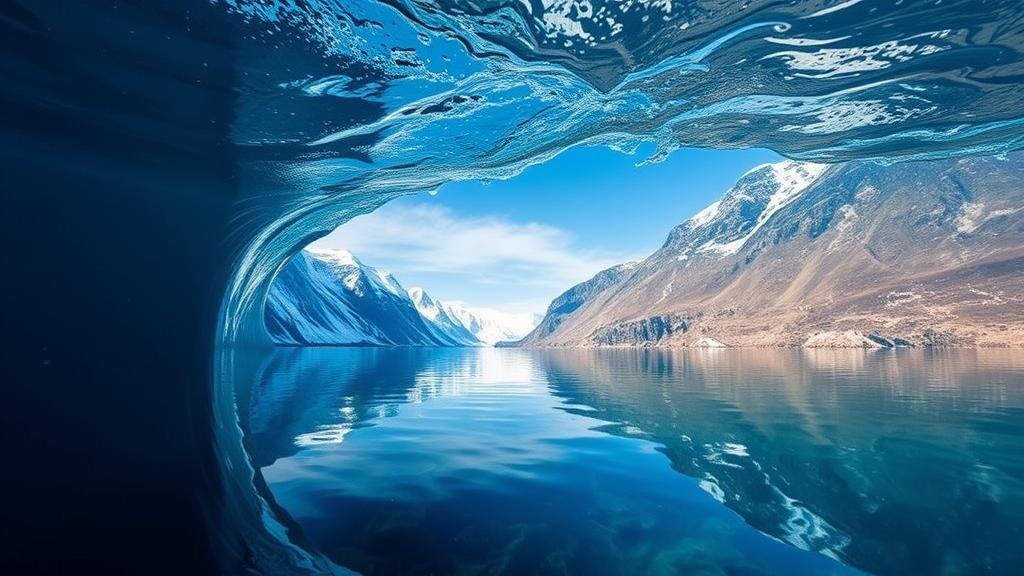Investigating the crystal-clear waters of Greenland’s fjords for marine creatures unseen by modern science.
Investigating the Crystal-Clear Waters of Greenland’s Fjords for Marine Creatures Unseen by Modern Science
Greenlands fjords, with their stunning scenery and pristine waters, are not just breathtaking landscapes; they also serve as habitats for a plethora of marine life, some of which remain undiscovered by modern science. This article delves into the importance of these ecosystems, the unique creatures they might harbor, and the ongoing efforts to explore these underwater realms.
The Importance of Greenlands Fjords
Greenlands fjords are long, narrow inlets formed by glacial erosion and characterized by their deep, clear waters. These environments play a critical role in marine biodiversity, supporting a variety of ecosystems that are integral to the health of the oceans. As reported by the National Snow and Ice Data Center, about 80% of Greenlands coastline is comprised of these fjords, making them a focal point for marine exploration.
Due to their isolation and unique environmental conditions, Greenland’s fjords may be home to species adapted to life in extreme conditions, similar to their counterparts in other remote regions, such as hydrothermal vent communities. For example, scientists have documented creatures like the icefish that can thrive in near-freezing waters, suggesting that even more unknown species could exist.
Potential Discoveries in Unexplored Waters
Despite significant advances in marine biology, many areas of the ocean, particularly in the Arctic, remain unexplored. A 2020 study published in the journal Nature Communications highlighted that about 90% of ocean species are still undescribed. e figures suggest that Greenland’s fjords could conceal a myriad of new marine organisms, with each new species offering insights into evolutionary processes and ecological interactions.
- Sub-glacial Lakes: Recently discovered sub-glacial lakes in Greenland, such as those found beneath the Greenland Ice Sheet, may also connect to the fjords, potentially housing unique microbial life.
- Adaptation and Evolution: Species like the Arctic cod demonstrate unique adaptations, and freshwater-influenced species may exhibit novel evolutionary traits not seen in their counterparts elsewhere.
The Role of Scientific Exploration
Marine researchers have increasingly focused on conducting expeditions to study the fjords of Greenland. In 2020, a team from the Greenland Institute of Natural Resources embarked on an extensive survey of the fjords, utilizing advanced technology such as remotely operated vehicles (ROVs) and autonomous underwater vehicles (AUVs) to gather baseline data on marine life.
These explorations not only aim to catalog species but also assess the impacts of climate change–such as diminishing ice cover and increasing ocean temperatures–on these fragile ecosystems. The 2023 State of the Arctic report emphasized that rising temperatures could lead to shifts in species distributions and increased vulnerability of these ecosystems.
Real-World Applications and Implications
The findings from ongoing explorations of Greenlands fjords have implications beyond just marine biology. can impact various sectors, including fisheries, conservation efforts, and climate change mitigation strategies. Understanding the biodiversity and resilience of these marine habitats can inform sustainable practices that help protect them.
Plus, potential new species discovered in these waters could lead to breakthroughs in biotechnology and medicine. For example, extremophiles–organisms that thrive in harsh conditions–have been a source of novel enzymes used in various applications, from industrial processes to pharmaceuticals.
Actionable Takeaways
As we delve deeper into the uncharted waters of Greenlands fjords, there are several essential takeaways:
- Support Research Initiatives: Contributing to marine research organizations can facilitate expeditions that seek to uncover unknown marine life.
- Advocate for Conservation: Promoting sustainable practices and policies helps ensure the protection of fragile ecosystems in the face of climate change.
- Stay Informed: Follow reputable scientific publications and updates from research bodies to keep abreast of new discoveries and advancements regarding marine biodiversity.
Exploring the unseen wonders of Greenland’s fjords not only enriches our understanding of marine life but also equips us with the knowledge necessary to safeguard these vital ecosystems for future generations. As scientific inquiry continues, who knows what remarkable discoveries await beneath the surface of these crystal-clear waters?



